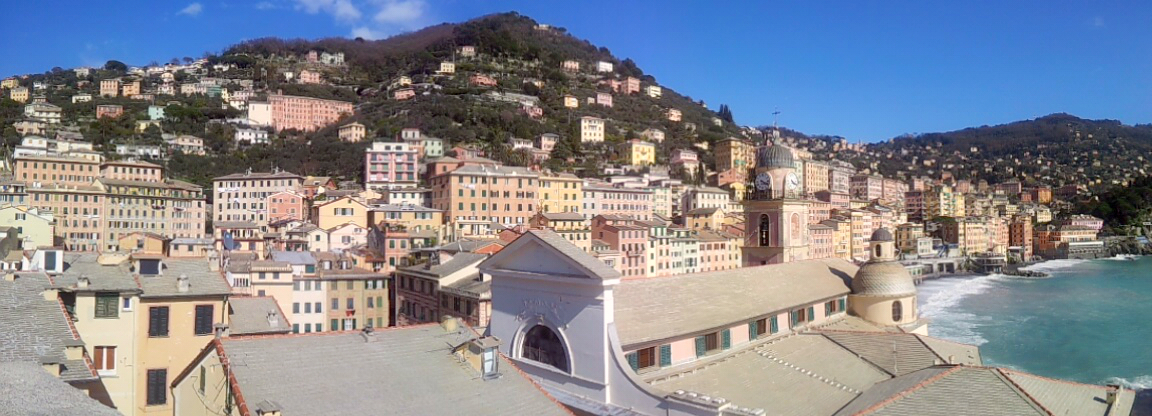


Typical seaside village, tourist center known for its marina and colorful buildings along the seafront.
It is also called the "City of a thousand white sailing ships".
Its inhabitants, the Camogliesi, by local tradition are sometimes called camoglini, on the model of the Ligurian camoggin.

The village of Camogli has prehistoric origins: a settlement testifies to it, identified during the excavation campaigns that took place from 1969 to 1977 near the Castellaro along the rio Gentile, structured on artificial terraces where at least two huts respectively dated are visible, based on the material ceramic, from the 16th and 13th centuries BC
Roman finds from the 2nd century BC have been found in the same area. Already under the dominion of the bishops of Milan, around the year 1000, the "coastal and maritime Camogli" began to form with citations in the texts of the time where it appears with the name of Vila Camuli; and it is from the Middle Ages onwards that it appears most in Genoese history.

In the twelfth century the Dragonara castle was erected to defend the seaside village, which was attacked and destroyed by Gian Galeazzo Visconti and Nicolò Fieschi in 1366 and later also by the Duchy of Milan in 1438. From the sixteenth century it joined more closely with Genoa and to its republic, especially for the continuous raids of the Turkish admiral Dragut, who provided for its fortifications and the consolidation of the marina, the latter completed in 1624 with the construction of the pier.
During the Genoese domination, and until its fall in 1797, it was part of the capitanate of Recco.
Like the territories of the Genoese republic, Camogli was also affected by the Napoleonic domination of the late eighteenth century which inserted the seaside village, on 2 December, in the Department of the Gulf of Tigullio, with Rapallo as its capital, within the Ligurian Republic.
From 28 April 1798 with the new French regulations, it was elevated to the title of capital of the second canton of the Fruit Jurisdiction. Precisely in this historical period the naval defeat of the naval battle of Abukir, in which the Ligurian fleet led by Napoleon Bonaparte was annihilated by the English navy, led to the investment of massive capital by the Camogliese shipowners in the construction of merchant ships, with requests and contracts from major European states.
The business of shipyards and in the most varied marine sector will favor a considerable increase in the economy and commercial exchanges, with the consequent urban development of the village, which in this phase reached its historical maximum.
From 1803 it was one of the main centers of the VI canton of Fruit, in the Jurisdiction of the Center, which had nearby Recco as its capital. Annexed to the First French Empire from 13 June 1805 to 1814, it was included in the Department of Genoa.
With the fall of Napoleon, in 1814, it was incorporated into the Kingdom of Sardinia, as established by the Congress of Vienna in 1815, and subsequently into the Kingdom of Italy from 1861. From 1859 to 1926 the territory was included in the VI district of Recco del district of Genoa of the then province of Genoa.

Already in 1856 its fleet was made up of 580 boats registered with the Mutua Assicurazione Marittima Camogliese, founded in 1852 by the local Nicolò Schiaffino, unique in the world and made up of a double armament than that of the maritime compartment of Hamburg, which remained active until 1888 With the advent of steam navigation the traditional Camogliese maritime activities are, over time, replaced by tourism.
Camogli
Address: Via XX Settembre, n. 1, 16032
Phone: 0185 72901
Site:
http://www.comune.camogli.ge.it/hh/index.phpLocation inserted by
Sergio Contrafatto